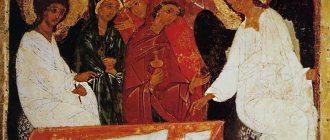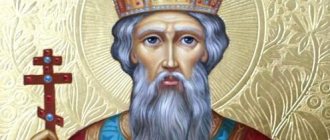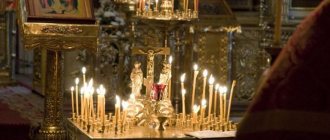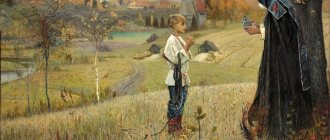The Day of the Myrrh-Bearing Women is a national holiday, which is usually celebrated on the second Sunday after Easter. This year this celebration falls on the third of May. According to the Orthodox church calendar, on this date believers honor the memory of the myrrh-bearing women who appeared to the cave with the body of Christ after his crucifixion. They carried myrrh with them to conduct the funeral party with the body of the Savior. Among these blessed girls were Salome, Mary Magdoline, Joanna, Mary of Cleophas, Susanna, Martha, Mary and other virgins.
History of the Day of the Myrrh-Bearing Women
Myrrh-bearers were women who loved Jesus Christ and welcomed him into their home during his lifetime. At the most difficult time, they accompanied the Messiah to Mount Golgotha, where He was crucified for imaginary reasons. There they witnessed the suffering and crucifixion of the Savior. Then, at the end of the Passover holiday, they came to the Holy Sepulcher in the dark to anoint the body of Jesus with myrrh, according to ancient Jewish traditions. For this reason, they were the first to know about the resurrection of the Savior. The first to arrive at the burial place was Mary Magdalene, to whom an Angel appeared and told about the rising of the Son of God from the dead.
Since the birth of Christianity in Rus', the holiday has been highly revered among the population. Even representatives of the wealthy strata of the population, hereditary boyars and merchant women, as well as girls from poor families tried to lead a pious lifestyle. They were distinguished by a special righteousness, which is difficult to compare with faith in other countries. The chastity of Christian marriage has become synonymous with the great Sacrament. According to the established rules of Orthodox Rus', one husband could have only one wife, and they remained faithful throughout their lives.
One of the distinctive features of Orthodox righteousness is the special concept of widowhood, which has come to us through the centuries. If the husband of a Russian princess died before her, she did not have to look for a husband again. At the same time, the Church did not prohibit this. It’s just that chaste girls considered it important to remain faithful throughout their lives. A number of famous widows, after the death of their spouse, went to a monastery, becoming a nun... A Russian wife is quiet and faithful, distinguished by patience and mercy, and forgives any offense. For this reason, the Orthodox Church often elevates Christian women to sainthood. Icon painters often take as a basis the images of Mary of Egypt, Faith, Hope, Love and their mother Sophia, the Virgin Mary and numerous martyrs, saints, blessed and other women who were close to the Lord.
The event that gave rise to the celebration
Myrrh-bearers are women who lived in those places where Jesus Christ preached his own teaching. They joyfully and with great love welcomed the Savior into their homes, considered Him to be the true Messiah, served Him faithfully and freely followed in His footsteps.
- All these women witnessed the suffering of God's Son on Calvary. The next morning they came to the body, which they had taken down after the crucifixion, and buried Him. Soon the myrrh-bearers visited the Holy Sepulcher to perform the ritual of Anointing, as ordered by traditional Jewish customs. This episode gave the name to the Orthodox celebration.
Icon of the Holy Myrrh-Bearing Women
- Myrrh-bearing women were enormously revered in Orthodox Rus'. Religious morality and strict traditions are deeply rooted in the minds of our people. Women of Rus' have long been distinguished by their great piety and spirituality, which was reflected in the enormous respect for this celebration. Ordinary peasant women, representatives of the nobility, merchants and philistines led a righteous life, fearing sinful acts. A desire was born in their hearts for good deeds, donations, and merciful deeds that pleased the Almighty Father.
- The Orthodox tradition treated the sacred sacrament of marriage with extreme chastity. The Russian woman was distinguished by her fidelity to her word, given on the altar, which marks the covenants of Christ. These ideals are still found today.
The myrrh-bearing women are praised for their incomparable meekness, humble disposition, endless patience and forgiveness. For these godly qualities they became holy examples for praise.
More about women glorified as saints:
- Life of Saint Anna Kashinskaya
- Life of Saint Anastasia the Pattern Maker
- Life of the Holy Great Martyr Catherine
Where does the name “myrrh-bearer” come from?
According to ancient Jewish traditions, special rituals were used to anoint the body of a deceased person before burial. It was covered with a special aromatic oil - myrrh. For this reason, women who carried myrrh to the grave of Jesus Christ to perform the funeral ritual were called myrrh-bearers. According to the text of Holy Scripture, on the third day after the crucifixion of the Savior, a number of women, among whom were Salome, Mary Magdalene, Joanna and others, went to the cave where His body was to remain. This act shows the fearlessness of the virgins. They understood that the tomb of Jesus was guarded by guards, but still decided to come and perform a ritual over the Three-Day Dead Man. True, they were never destined to carry out the ceremony, because the coffin turned out to be empty.
The angel who was in the cave told the women that there was no point in looking for the living among the dead, because He fulfilled his promise and was resurrected. The tradition of saying “Christ is Risen” was founded by Mary Magdalene, who was the first to enter the cave and address these words to the other myrrh-bearing women. She ran out to the rest of the Savior’s companions and declared that Christ truly is the Son of God. In addition, she told those around her that she had seen God with her own eyes. Mary brought the first good news to the apostles, announcing a great miracle that took place not far from Golgotha. In fact, these same words were the first sermon in the world that was dedicated to the Resurrection of the Son of God. Since then, there has been a tradition of giving a red egg in honor of Easter. According to the traditions of the Russian Orthodox Church, on this day all Christian women are remembered. In fact, the holiday has become a religious analogue of March 8th.
Orthodox Women's Day: Week of the Myrrh-Bearing Women
Today, in the third week after Easter, the Orthodox Church remembers and glorifies the feat of the holy myrrh-bearing women: Mary Magdalene, Mary of Cleopas, Salome, Joanna, Martha and Mary, Susanna and others.
These women witnessed the Savior's death on the cross. They saw how the sun darkened, the earth shook, stones crumbled, and many righteous people rose from the dead when Jesus Christ was crucified and died on the cross. These are women in whose houses the Divine Teacher visited for their love for Him. The women who followed Him to Golgotha and did not leave the cross, despite the anger of the scribes and elders of the Jews, and the atrocities of the soldiers. They, loving Christ with pure, holy love, decided to go in the dark to the Holy Sepulcher, by the grace of God overcoming the horror that made the apostles run away in fear, hide behind closed doors, and forget about their discipleship duty.
Weak, fearful women, by the miracle of faith, grow before our eyes into evangelist wives, an example of courageous and selfless service to God. The Lord appeared to them first. And only then to Peter and the other disciples. They learned about the Resurrection before any of the men. They became the first and powerful preachers, began to serve Him in a new, higher - apostolic calling, and carried the news of the Resurrection of Christ. Well, aren’t such women worthy of eternal memory, admiration and imitation?
Why do all the evangelists pay so much attention to the coming of the myrrh-bearers to the Holy Sepulcher, and two of them add a story about how Mary Magdalene was chosen to be the first to see the Risen One? After all, Christ did not choose these women and did not call them to follow Him, like the apostles and 70 disciples? They themselves followed Him as their Savior and Son of God, despite His visible poverty, simplicity and the obvious hostility of the high priests towards Him.
What did these women experience standing at the Cross of the Savior when they saw the shame, horror and death of their beloved Teacher?! When the earthly life of the Son of God was cut short, they hurried home to prepare aromas and ointment. Mary Magdalene and Mary of Joseph watched where Jesus' body was laid in the tomb. They left only after complete darkness had fallen, and before dawn they again came to the tomb.
“And behold, more disciples - apostles! - remained at a loss, Peter himself bitterly mourned his renunciation, but the women were already hurrying to the Teacher’s tomb. Isn’t fidelity the highest Christian virtue? When the word “Christians” was not yet used, they were called “faithful.” Liturgy of the Faithful. One of the famous ascetic fathers told his monks that in the last times there will be saints, and their glory will surpass the glory of all those who came before, because then there will be no miracles and signs, but they will remain faithful. How many feats of fidelity have been accomplished by good Christian women over the centuries of the history of the Church!” – writes historian Vladimir Makhnach.
Sin came into the world with woman. She was the first to be tempted and tempted her husband to fall away from the will of God. But the Savior was born from the Virgin. He had a Mother. To the remark of the iconoclast Tsar Theophilos: “A lot of evil has come into the world from women,” nun Cassia, the future creator of the canon of Great Saturday “By the Wave of the Sea,” answered weightily: “Through a woman, the highest good came.”
The path of the myrrh-bearers is quite simple and understandable to each of us. These women, different in life, served and helped their beloved Teacher in everything, took care of His needs, made His way of the cross easier, and sympathized with all His trials and torments. We remember how Mary, sitting at the feet of the Savior, listened with all her being to His teaching about eternal life. And another Mary - Magdalene, anointing the Teacher’s feet with precious myrrh and wiping them with her wonderful hair, and how she cried on the way to Golgotha, and then ran at dawn on the day of the Resurrection to the tomb of the tortured Jesus. And all of them, frightened by the disappearance of Christ from the tomb, sobbing in inexpressible despair and amazed by the appearance of the Crucified One on the way, when they hurried to inform the apostles about what had happened.
Hieromartyr Seraphim (Chichagov) drew the attention of women: “They are all the more dear to us and close to our hearts because they were the same simple people as we are, with all human weaknesses and shortcomings, but out of boundless love for Christ they were completely reborn and changed morally , achieved righteousness and justified every word of the teachings of the Son of God. With this rebirth, the holy myrrh-bearing women irrefutably proved to all the followers of Christ that the same saving rebirth is not only possible for them, but also obligatory, provided they are sincere, and that it is accomplished by the grace-filled power of the Gospel reproof, admonition, strengthening, inspiration or encouragement to spiritual deeds , and ascetics acquire the Kingdom of God, which is truth, peace and joy in the Holy Spirit.”
They achieved sincerity through their love for Christ and through perfect repentance they were delivered and healed from passions. And they will forever serve the entire Christian world as an example of strong and living love, Christian women’s care for people, and a model of repentance!
Traditions of this day
On the Day of the Myrrh-Bearing Women, it is customary to congratulate the women around you by presenting them with flowers. We can talk about mothers, sisters, spouses, grandmothers, as well as daughters and just close friends. It is generally accepted that each of them becomes a birthday girl on this day.
In ancient times, this day was usually called “women’s week” or “women’s week.” The reason for this is the direction of the holiday, because they remembered the weaker sex. For this reason, girls and women became the heroes of the occasion. Men were not even allowed to begin preparatory work. Even before the third of May, the women who would participate in the holiday, as well as the location where it would be held, were chosen. In the future, these ladies had to go around the courtyards of the village to collect chicken eggs and the chickens themselves for preparing the main dishes. In the process of carrying out rituals, women selected a godfather for the future. Together with his friend, they gave each other nice gifts.
Women's holiday in Rus': traditions and prohibitions
The Week (Sunday) of the Myrrh-Bearing Women is Orthodox Women's Day, which is celebrated instead of March 8. Myrrh-bearing wives were especially revered in Rus'; on this day women were glorified as guardians of purity and Christian marriage. According to the Christian tradition, on this holiday the wife should be especially meek towards her husband, and for quarrels and arguments with him or remarks addressed to him, the “culprit” should bow down or atone for the sin in some other way.
At the same time, there were folk traditions for celebrating this holiday, which provided for a much less patriarchal attitude towards women. In Rus', the holiday was called Indian Day, when all women were considered birthday girls.
On their holiday, women gathered in large groups, without men, sometimes in nature. Traditionally, on this day, the main spring dishes were prepared - pancakes (a symbol of the sun) and scrambled eggs (a symbol of rebirth and procreation) from a large number of eggs. For scrambled eggs, the most respected woman collected eggs in advance from all participants in the feast. Such scrambled eggs were called Indian eggs; during the festive meal they were divided equally among all participants. In the folk tradition on this day there was no question of any submission to the husband: women were in charge of everything, and husbands, fathers and brothers did not contradict them in anything.
On the holiday of May 3, swearing, arguments, quarrels, bad thoughts, slander and deception are prohibited. Due to restrictions imposed due to the coronavirus pandemic, public celebrations on this day are prohibited, and visits to churches and cemeteries are also prohibited.
What more can you ask for?
The Mother of God patronizes not only women’s issues, so you can ask her not only to improve your personal life and “weather” in the family.
On her holiday, you must definitely ask the Mother of God for health - for its strengthening and healing from illnesses. Even in the old days they knew: it is good to pray to the Kazan Icon for deliverance from vision problems. You can ask not only for yourself, but also for your loved ones.
On the day of the Kazan Icon (July 21), it is customary to ask for protection for yourself, loved ones, and even at home. History knows the case when in 1812 the Kazan Icon defended Russian troops from the French. It was she who helped them win victories over Napoleon's troops. This is a well-known historical fact that directly confirms the power of the icon.
The Mother of God helps in difficult life situations. People turn to her in moments of problems - asking for help in getting rid of them. But you need to ask not for the problem to disappear without a trace - it is correct to pray for the endowment of wisdom just enough to be able to find the right path.
You need to make a vital decision - also contact the Kazan Icon on July 21. Ask her to protect you from global mistakes that could lead to unpleasant consequences.










